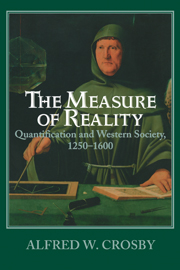4 - Time
Published online by Cambridge University Press: 05 October 2013
Summary
The Horologium – not only does it show and register the hour to our eyes, but also its bell announces it to the ears of those who are far away or staying at home. Hence in a way it seems to be alive, since it moves of its own accord, and does its work on behalf of man, night and day, and nothing could be more useful or more pleasant than that.
Giovanni Tortelli (1471)Time puzzled St. Augustine: “I know well enough what it is, provided that nobody asks me; but if I am asked what it is, and try to explain, I am baffled.” Measurements are usually of something distinctively itself – a hundred meters of road, of meadow, of lake – but a hundred hours, happy or sad, is a hundred hours of … time.
Time's insubstantiality defied St. Augustine's understanding and defies ours, but allows humans to press upon it their own conceptions of its parts. It is not odd that medieval Western Europeans took in measuring time their first giant step forward in practical metrology. Nor is it odd that they did so in measuring hours, rather than in calendar reform. Hours were not bounded by natural event, but were arbitrary durations and susceptible to arbitrary definition. Days, in contrast, had such boundaries in darkness and light, and, furthermore, calendars were artifacts of millennia of civilization, stiff with encrustations of custom and sanctity.
- Type
- Chapter
- Information
- The Measure of RealityQuantification in Western Europe, 1250–1600, pp. 75 - 94Publisher: Cambridge University PressPrint publication year: 1996



